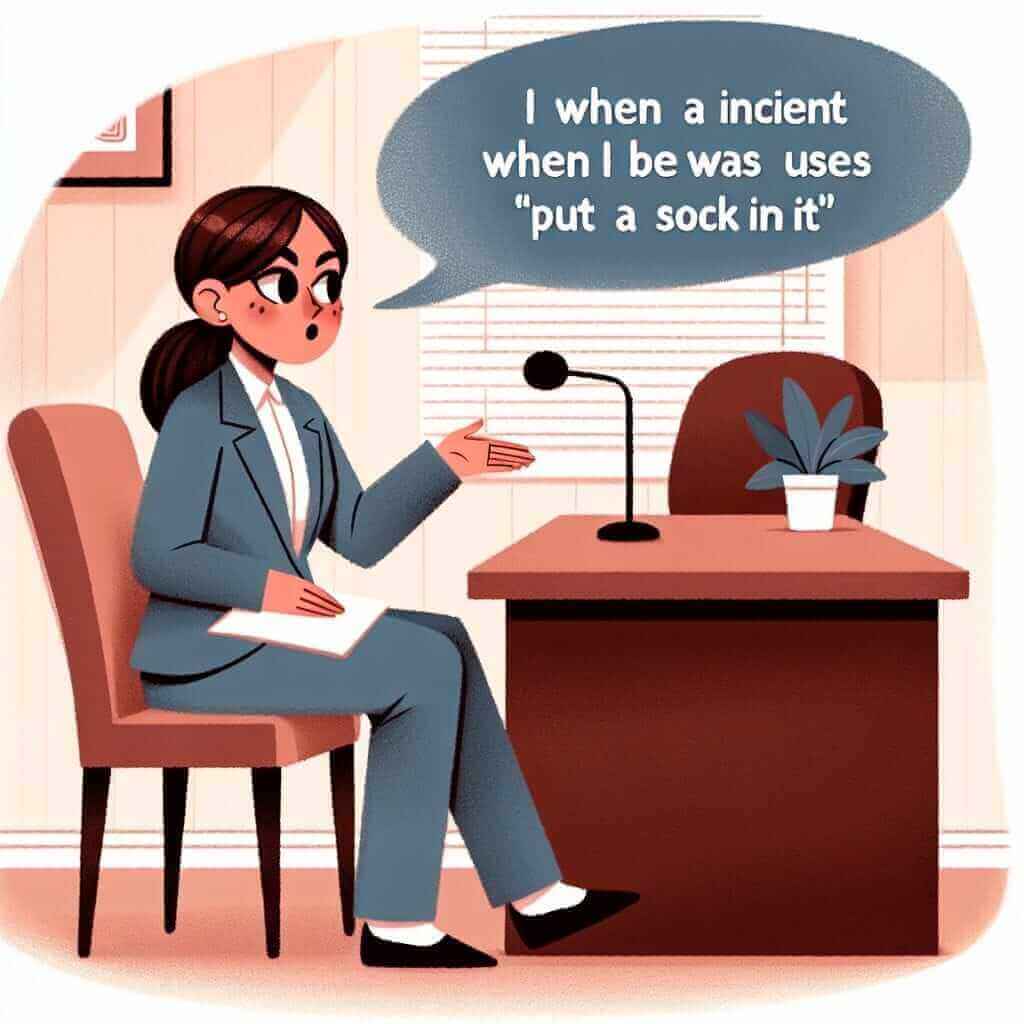English is rich with idiomatic expressions, and one that often pops up in informal contexts is “put a sock in it.” This idiom is essential for IELTS candidates aiming to achieve high scores in both the Speaking and Writing sections. This article will delve deep into its meaning, usage, and how to effectively incorporate it along with related vocabulary. We will explore its appearances in past IELTS tests and provide detailed examples to ensure you grasp its essence.
Key Vocabulary
Put a sock in it (idiom): Used to tell someone to be quiet.
Synonyms: Be quiet, shut up, keep it down
Antonyms: Speak up, sound off, make a noise
Example Sentences:
- Johnny wouldn’t stop talking, so Lisa told him to put a sock in it. (idiom – informal)
- Please keep it down; people are trying to study. (phrasal verb)
- The teacher told the students to be quiet during the test. (imperative verb)
Analysing the Idiom: “Put a sock in it”
Meaning and Pronunciation
Put a sock in it [pʊt ə sɑk ɪn ɪt] is an idiom originating from early 20th-century Britain. Ingrammatically, it is an imperative sentence used to instruct someone to stop talking or making noise, often because they are being annoying or disruptive.
Contextual Usage
The phrase “put a sock in it” is informal and should be used cautiously in formal writing or speech. However, it can be a powerful tool in creating conversational tone in specific parts of the IELTS Speaking test.
IELTS Test Relevance
Idioms like “put a sock in it” can be particularly useful in Part 1 and Part 2 of the IELTS Speaking test. Demonstrating knowledge of idiomatic expressions can show examiners your proficiency in the English language.
Example in IELTS Context
IELTS Speaking Part 2 Example Question: “Describe a time when you were annoyed by someone who talked too much.”
Sample Answer:
“I’ll never forget the time when I was trying to focus on an important project at university, and my roommate simply wouldn’t stop talking about his weekend plans. Despite hinting that I was busy, he kept on chattering. Finally, I had to tell him to put a sock in it, which fortunately, he took in good humor and left me to my work.”

Phonetic Pronunciation and Variations
Phonetic Pronunciation:
- Put a sock in it: /pʊt ə sɑk ɪn ɪt/
Variations:
- “Keep it down”: Less aggressive, suitable for more formal contexts.
Example Sentences:
- During the library hours, everyone was asked to keep it down.
- It was late at night when he asked his loud neighbors to put a sock in it.
Combining the Idiom with Other Words
Practice Combining with Common Collocations:
- Put a sock in it, already! (emphasizing annoyance)
- Could you keep it down a little?
Examples:
- “When the movie started, the usher had to tell the noisy kids to put a sock in it already.”
- “During the exam, the proctor asked everyone to keep it down to maintain a quiet environment.”
Related Idioms and Expressions
List of Idioms Related to Silence
- Bite your tongue: To stop yourself from talking.
- Example: I wanted to complain, but I had to bite my tongue.
- Mum’s the word: To say nothing.
- Example: She finally agreed to keep our secret, saying mum’s the word.
- Button your lip: To refrain from speaking.
- Example: If you know what’s good for you, you’ll button your lip.
- Hold your tongue: To stop from saying something you were tempted to say.
- Example: She looked like she wanted to argue but decided to hold her tongue.
- Zip it: Stop talking.
- Example: He was going to offer his opinion, but she told him to zip it.
Conclusion
Understanding and correctly using idioms like “put a sock in it” can significantly enhance your IELTS performance by showcasing your ability to use English naturally and expressively. By integrating such idiomatic expressions into your language practice, you can make your speech more engaging and lively, a factor that examiners highly appreciate. For further practice, attempt writing essays or speaking tasks incorporating these idioms and related vocabulary to ensure you are fully prepared for the nuance and variety expected in the IELTS exam.